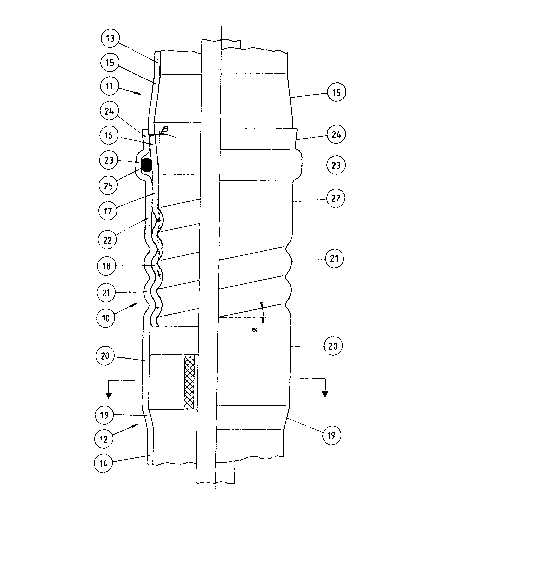Some of the information on this Web page has been provided by external sources. The Government of Canada is not responsible for the accuracy, reliability or currency of the information supplied by external sources. Users wishing to rely upon this information should consult directly with the source of the information. Content provided by external sources is not subject to official languages, privacy and accessibility requirements.
Any discrepancies in the text and image of the Claims and Abstract are due to differing posting times. Text of the Claims and Abstract are posted:
| (12) Patent: | (11) CA 1292488 |
|---|---|
| (21) Application Number: | 1292488 |
| (54) English Title: | PIPE JOINT |
| (54) French Title: | JOINT POUR TUYAUX |
| Status: | Expired and beyond the Period of Reversal |
| (51) International Patent Classification (IPC): |
|
|---|---|
| (72) Inventors : |
|
| (73) Owners : |
|
| (71) Applicants : |
|
| (74) Agent: | GOWLING WLG (CANADA) LLP |
| (74) Associate agent: | |
| (45) Issued: | 1991-11-26 |
| (22) Filed Date: | 1986-10-24 |
| Availability of licence: | N/A |
| Dedicated to the Public: | N/A |
| (25) Language of filing: | English |
| Patent Cooperation Treaty (PCT): | No |
|---|
| (30) Application Priority Data: | ||||||
|---|---|---|---|---|---|---|
|
Abstract
A pipe joint for thin-walled tubes (13, 14) is provided for
transmission of water. The pipe joint includes a male
portion (11) and a female portion (12) both of which having
pressure cut threads (18, 21). At mounting thereof these
portions (11, 12) are threadably engaged so that a seal ring
(25) received in an annular extension (23) of the female
portion (12) is brought into engagement with a conical
portion (16) of said male portion (11) so as to provide
tightening of said pipe joint.
Note: Claims are shown in the official language in which they were submitted.
Note: Descriptions are shown in the official language in which they were submitted.

2024-08-01:As part of the Next Generation Patents (NGP) transition, the Canadian Patents Database (CPD) now contains a more detailed Event History, which replicates the Event Log of our new back-office solution.
Please note that "Inactive:" events refers to events no longer in use in our new back-office solution.
For a clearer understanding of the status of the application/patent presented on this page, the site Disclaimer , as well as the definitions for Patent , Event History , Maintenance Fee and Payment History should be consulted.
| Description | Date |
|---|---|
| Inactive: IPC from MCD | 2006-03-11 |
| Time Limit for Reversal Expired | 2005-11-28 |
| Letter Sent | 2004-11-26 |
| Grant by Issuance | 1991-11-26 |
There is no abandonment history.
| Fee Type | Anniversary Year | Due Date | Paid Date |
|---|---|---|---|
| MF (category 1, 6th anniv.) - standard | 1997-11-26 | 1997-10-17 | |
| MF (category 1, 7th anniv.) - standard | 1998-11-26 | 1998-10-20 | |
| MF (category 1, 8th anniv.) - standard | 1999-11-26 | 1999-10-18 | |
| MF (category 1, 9th anniv.) - standard | 2000-11-27 | 2000-10-18 | |
| MF (category 1, 10th anniv.) - standard | 2001-11-26 | 2001-10-17 | |
| MF (category 1, 11th anniv.) - standard | 2002-11-26 | 2002-10-17 | |
| MF (category 1, 12th anniv.) - standard | 2003-11-26 | 2003-10-16 |
Note: Records showing the ownership history in alphabetical order.
| Current Owners on Record |
|---|
| SANDVIK AB |
| Past Owners on Record |
|---|
| ALVAR TORSTEN WESTBERG |